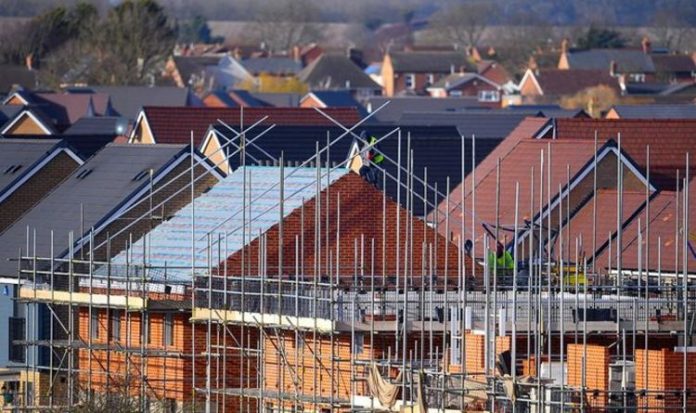The changes are aimed at ending the housing crisis by increasing home ownership. Plans to give first-time buyers a 30 percent discount worth an average of £100,000 were also confirmed, with locals, police, nurses and teachers among those at the front of the queue. All new streets will be tree lined under the blueprint and new homes must be carbon neutral by 2050.
The overhaul has been set out in a white paper, Planning For The Future, published today.
It is expected to help the Government near its target of 300,000 new homes a year.
Housing Secretary Robert Jenrick said the move would create thousands of jobs as the country recovers from the pandemic.
But the Cabinet minister insisted precious green belt land will continue to be protected.
Writing for the Daily Express, Mr Jenrick said: “The overhaul of our planning system will provide more people with homes they can call their own, and will also ensure greener, better-looking and better equipped neighbourhoods for all.
“We’ll cut red tape but not high standards in order to build the right homes, in the right places and give this generation and the next the opportunity of home ownership.”
Under the reforms, land will be split into three categories which determine how quickly and easily new developments can be built.
It means some decisions will be taken out of the hands of councils.
Plans will set out zones where there is presumed consent for new housing as long as the buildings are in keeping with the area.
Much quicker development will go ahead in renewal areas if it is well-designed.
Beautiful buildings will also be fast-tracked.
Communities will have their say on how the area is designated.
The Government hopes reducing bureaucracy will dramatically speed the sluggish process.
Empty commercial buildings will also be allowed to be turned into homes quicker to help rejuvenate deserted town centres.
Matthew Fell, CBI chief UK policy director, said: “Changes to the planning system will ramp up the availability of homes in places where people need them most.
“These reforms will allow housebuilders to get to work, supporting supply chains and more flexible, local labour markets.
“With coronavirus continuing to cast a shadow of uncertainty over the economy, a more flexible planning system must give local authorities and businesses scope to deliver the homes people need in the short term while laying the groundwork for sustainable communities for decades to come.”
Tom Fyans, thr deputy chief executive at the Campaign to Protect Rural England, said: “The acid test for the planning reforms is community involvement, and on first reading it’s still not clear how this will work under a zoning system. Although we welcome the Government’s commitment to all areas having a local plan in place, we also need robust legal guarantees that the public are consulted regarding new development.”
The planning overhaul will help smaller building firms that struggle with onerous planning rules, delays and costs.
They accounted for 40 percent of the market 30 years ago but are just 12 percent now.
All areas will have to have local housing plans in place within 30 months instead of the seven years it takes now.
It is hoped that clear planning rules will cut the need for cases to go to court with around 30 per cent currently overturned on appeal.
James Thomson, the chief executive officer at Gleeson Homes, said: “The renewed commitment to building 300,000 new homes a year is an important goal and will be aided by these new initiatives.”







